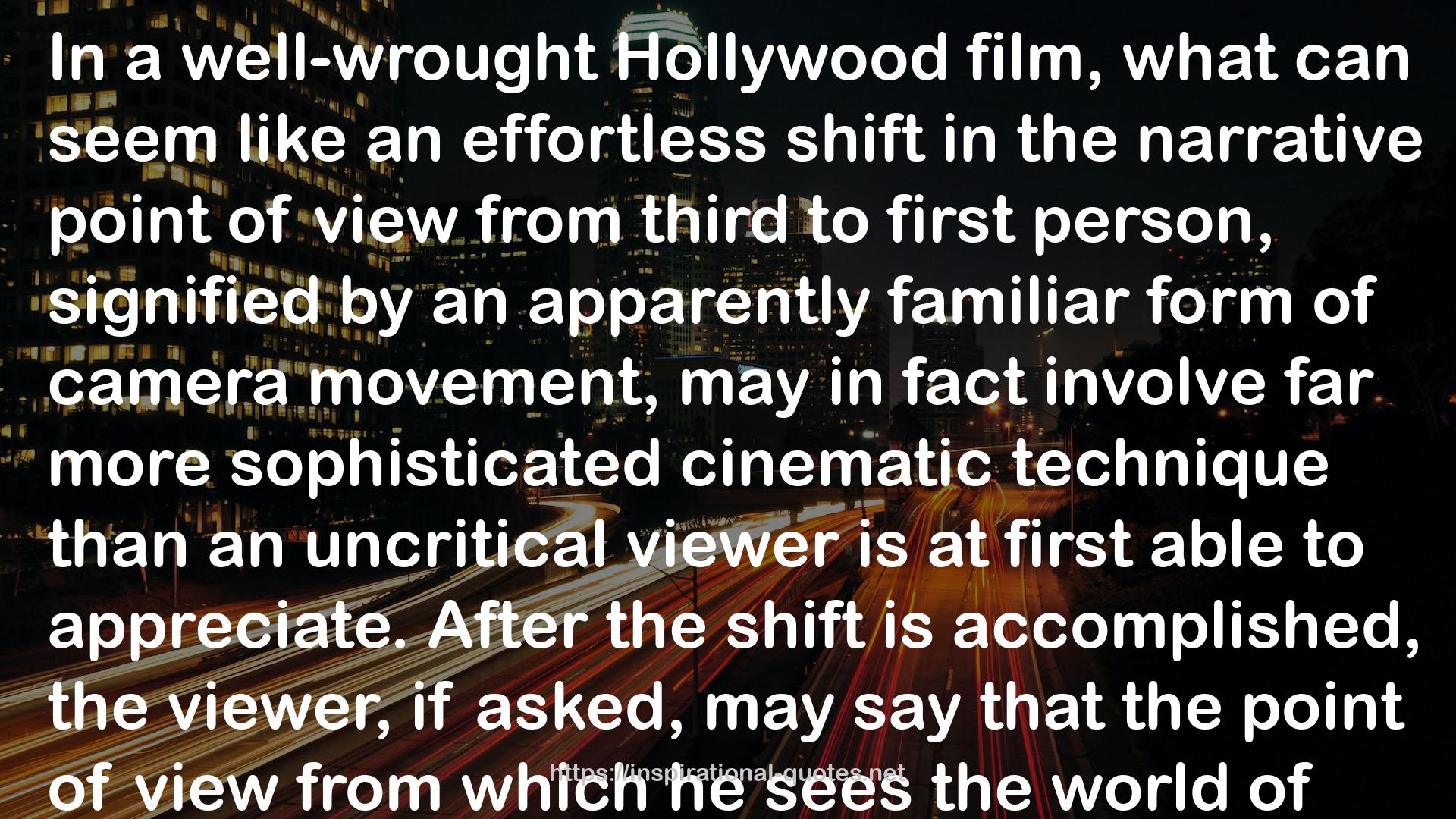" In a well-wrought Hollywood film, what can seem like an effortless shift in the narrative point of view from third to first person, signified by an apparently familiar form of camera movement, may in fact involve far more sophisticated cinematic technique than an uncritical viewer is at first able to appreciate. After the shift is accomplished, the viewer, if asked, may say that the point of view from which he sees the world of the movie perfectly coincides with that of the first-person point of view of a female character in the movie onto that same world. But careful examination will reveal that the viewer's ability to follow the visual narration depends on a form of understanding of what he sees that is considerably more logically sophisticated that he takes it to be. For the viewer actually understands that he sees what happens in that fictional world from a point of view that somehow succeeds in folding her first-person point of view (through whose perceptual consciousness the world of the movie is disclosed to him) into a further first-person perspective (namely his - the viewer's). The manner in which the one is enfolded in the other needs to permit the viewer's point of view fully to subtend her perceptual first-person present point of view onto the world of the movie without his thereby coinciding with hers. The two forms of subjectivity (that of the viewer and that of the character) must manage to be perfectly aligned along one logical dimension, while along another remaining perfectly distinct. An ordinary viewer of an ordinary (so-called) point-of-view shot in a Hollywood movie achieves a remarkably logically complex form of point of view onto the world of the movie - one that requires its own cinematically specific mode of logical alienation. "
― , The Logical Alien: Conant and His Critics
